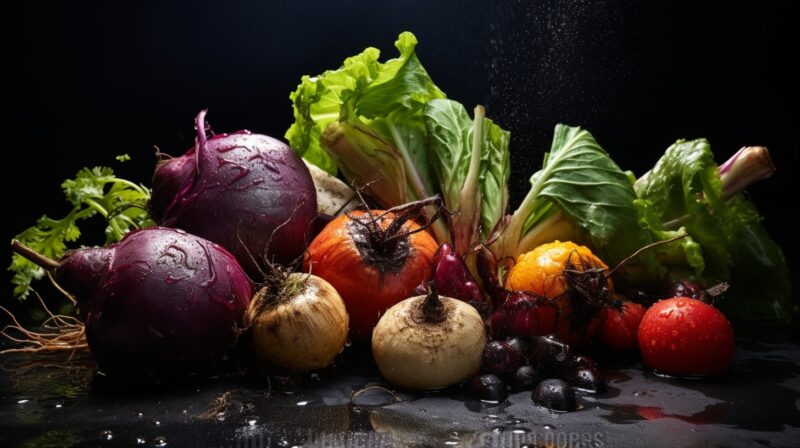Science fairs are the bedrock of young scientific exploration, offering kids a platform to engage deeply with the principles of science. The experimentation and hands-on exploration can ignite a passion in young minds, not only answering intriguing questions but also teaching them the methodology to find those answers.
Drawing inspiration from a recent science fair project conducted by a 10-year-old student named Malik, this post gets into the mystery behind the mold growth on different foods.
What Is Mold and Why Should We Care?
Mold is a common occurrence in many households. However, its frequent appearance in our homes doesn’t make it any less of an enigma, especially when it decides to grow on certain foods and not on others.
What is Mold?
Mold belongs to the fungi kingdom and thrives in warm and moist environments. Its spores are often airborne, and when they land on a surface that provides them with the right conditions, they grow and spread. This growth can be harmful to our health if consumed, leading to allergic reactions or even respiratory issues.
The Importance of Studying Mold
Understanding why mold grows on certain foods can provide insights into food preservation, health implications, and more. This knowledge can help us make informed decisions about storing food, ensuring we consume it while it’s fresh, and knowing when it’s time to discard moldy items.
Factors Influencing Mold Growth on Foods

Not all foods mold at the same rate. Some might remain fresh for weeks, while others mold within days. Let’s uncover the reasons behind these discrepancies.
Ingredients and Their Role
According to the FSIS, food composition plays a crucial role in how quickly mold develops.
- Natural Foods: These foods, like fruits and vegetables, contain natural sugars and moisture, creating a favorable environment for mold growth.
- Processed Foods: Typically, these have preservatives that deter mold growth. These preservatives are chemicals or natural substances added to keep food fresh for a more extended period.
Environmental Conditions
According to the National Institutes of Health, the environment in which food is stored plays a significant role in mold growth. Key factors include:
- Temperature: Mold prefers warmer temperatures, especially those between 77°F (25°C) and 86°F (30°C).
- Moisture: Mold thrives in damp conditions, making foods with higher water content more susceptible.
- Oxygen: While not all molds require oxygen, many common types do. Foods with pockets of air, like bread, can facilitate mold growth.
Analyzing the Experiment: Natural vs. Processed Foods

Malik’s experiment sought to compare mold growth between natural and processed foods, and the results were intriguing.
The Hypothesis
Starting with a question – “Why do some foods mold faster than others?” – Malik hypothesized that natural foods would mold faster than processed ones because of their inherent moisture and lack of preservatives.
The Findings
After a 14-day observation period, Malik’s results were clear:
- Natural foods like blueberries, strawberries, corn, and carrots showed significant mold growth.
- Processed foods like licorice and potato chips showed little to no mold.
According to Harvard T.H. Chan School of Public Health, preservatives in processed foods make it challenging for mold to thrive. On the other hand, the inherent moisture in natural foods like fruits and vegetables facilitates mold growth.
Frequently Asked Questions (FAQ)

1. Is mold on food always harmful?
While some molds can produce harmful toxins, not all molds are dangerous. However, it’s best to err on the side of caution and discard moldy food.
2. Can moldy food be salvaged?
In hard cheeses, mold can be cut away, leaving a one-inch buffer around the mold spot. For most other foods, it’s safer to discard them.
3. Why does mold have different colors?
The color of mold is determined by the type and the nutrient source. Common mold colors include green, white, orange, and black.
4. Can mold grow in refrigerated foods?
Yes, though colder temperatures slow down mold growth, some molds can still grow in refrigerated foods over time.
5. How can I reduce mold growth in my pantry?
Ensure your pantry remains dry, has adequate ventilation, and store susceptible foods in airtight containers.
6. Are there any health benefits to molds?
Some molds are used in food production, like Penicillium in blue cheese. Penicillin, an antibiotic, is also derived from mold.
7. Why did mold grow on my bread but not on the jam next to it?
This could be due to preservatives in the jam, the high sugar content (which can act as a preservative), or the environment not being moist enough for mold growth.
In Conclusion
Mold growth on food is influenced by various factors, from the food’s inherent characteristics to the environment in which it’s stored. Malik’s science fair project provides a glimpse into this fascinating world, emphasizing the importance of understanding food storage and safety.
His findings underscore the fact that while natural foods might mold faster, understanding the conditions that facilitate this growth can help us better store our food and ensure we’re consuming it safely.
